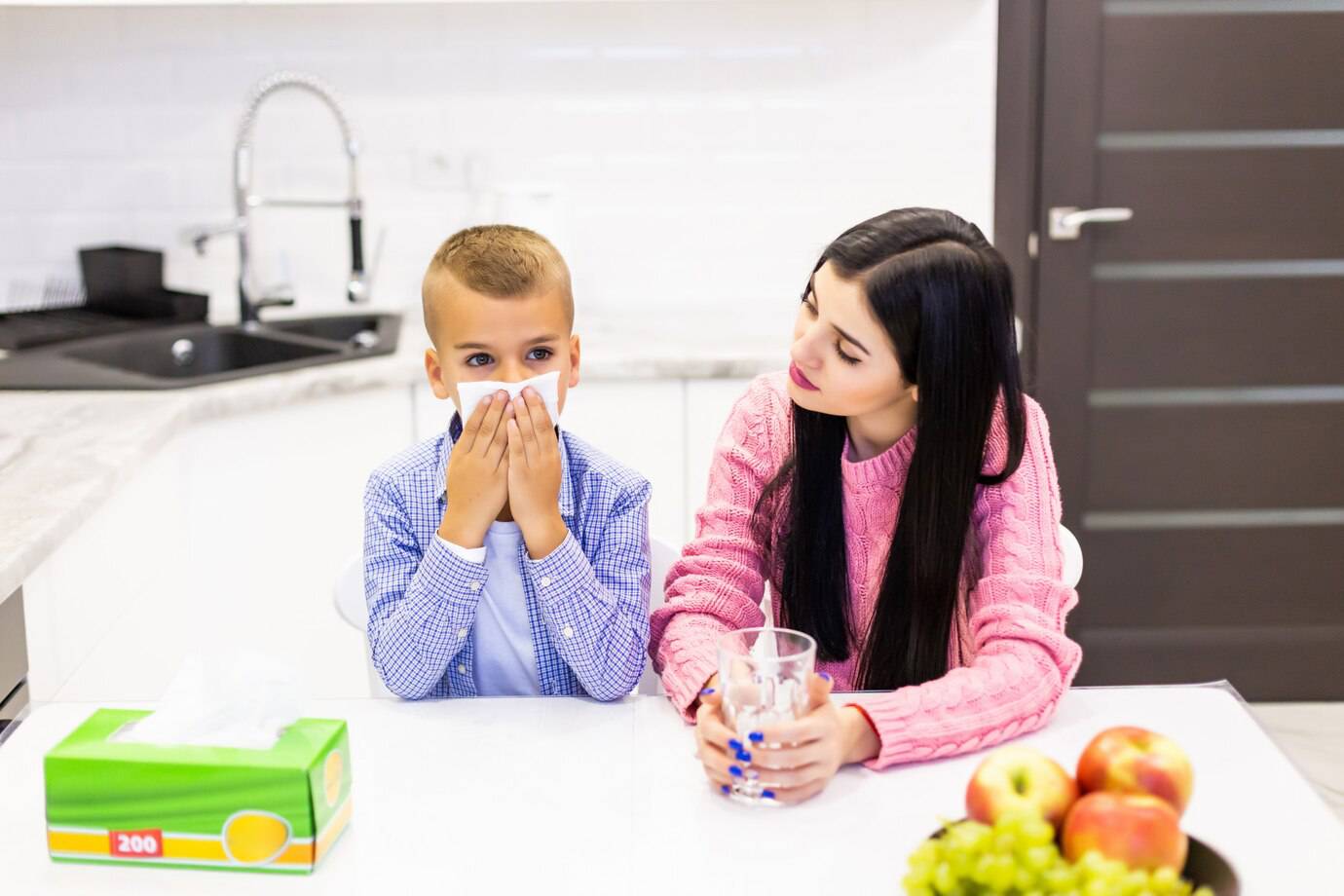The Health Blog

Natural Remedies for Common Childhood Ailments
When your child comes down with a sniffle, rash, or upset tummy, your first instinct is to help them feel better — fast. But you might hesitate to reach for over-the-counter medicine every time. That’s where natural remedies for children come into play. From soothing chamomile tea to immune-boosting elderberry syrup, holistic solutions offer gentle yet effective relief for many everyday ailments.
Parents today are increasingly turning to holistic paediatric care, blending modern knowledge with time-tested traditional wisdom. This guide will walk you through the best herbal treatments and natural practices for common childhood issues, backed by science, safety tips, and personal stories. Let’s dive into nature’s toolkit and discover how to care for your child in a safe, nurturing, and natural way.
Why Choose Natural Remedies for Children?
The Gentle Power of Nature
Natural remedies are often kinder to a child’s developing system. They support the body’s own healing process, often with fewer side effects than synthetic drugs.
Key benefits include:
- Mild and well-tolerated
- Less risk of dependency or overuse
- Focused on root causes, not just symptoms
Holistic Paediatric Care in Practice
This approach combines nutrition, emotional wellness, herbal remedies, and preventive care. It treats the child as a whole — body, mind, and spirit.
“Children are incredibly responsive to subtle therapies. A warm compress, calming tea, or loving touch can work wonders.” — Dr. Aviva Romm, integrative paediatrician
1. Common Cold and Flu
Natural Treatments

Elderberry syrup is a go-to remedy for immune support. Studies show it can shorten flu duration and lessen symptom severity.
Honey and lemon tea (for children over 1 year old) soothes sore throats and coughs.
Eucalyptus chest rubs (diluted essential oil blends) can ease congestion.
Home Strategies
- Use a humidifier to ease breathing
- Encourage rest and hydration
- Offer warm broths and soups
Caution:
Never use essential oils undiluted or on infants. Always check age-appropriate guidelines.
2. Tummy Troubles
For Digestive Discomfort
Chamomile tea helps calm spasms in the digestive tract.
Peppermint tea or diluted peppermint oil (topical, on the belly) can relieve bloating and nausea.
Probiotics support gut health, especially after antibiotics or diarrhoea.
Learn How to Create a Personalised Herbal Tea Blend for you and your family.
Natural Foods That Help:
- Bananas (great for diarrhoea)
- Rice and toast (bland and binding)
- Ginger tea (small sips for nausea, safe from age 2+)
3. Sleep Struggles
Creating a Bedtime Ritual
A predictable routine with gentle natural aids can transform bedtime battles.
Lavender essential oil (diffused or diluted) promotes relaxation.
Warm oat baths with chamomile relax the nervous system.
Magnesium spray or Epsom salt baths soothe restlessness (use under supervision).
A bedtime story and back rub work as well as any herbal remedy — the connection is calming.
4. Skin Irritations & Rashes
Soothing Topical Solutions
Calendula cream is excellent for minor cuts, rashes, and eczema.
Coconut oil has anti-inflammatory and antimicrobial properties.
Oatmeal baths calm itchy skin (great for chickenpox or eczema).
For Nappy Rash:
- Air the skin out frequently
- Use zinc-based natural nappy creams
- Avoid fragranced wipes or soaps
5. Teething Pain
Safe, Gentle Support
Cold carrot sticks (under supervision) or frozen washcloths to chew on help relieve inflammation.
Chamomile teething gels (alcohol-free, natural brands) can be soothing.
Amber teething necklaces are popular, but use caution — not for sleep or unsupervised use.
6. Ear Infections
Natural Remedies
Garlic oil drops (warmed, not hot) have natural antimicrobial properties. Use only if the eardrum isn’t ruptured.
Warm compresses help relieve pain.
Immune support:
- Elderberry syrup
- Vitamin C and D
- Zinc
Always consult a doctor for persistent fever or severe symptoms.
7. Minor Injuries and Bruises
Natural First Aid Kit
- Arnica gel: Great for bumps and bruises
- Aloe vera: For minor burns or scrapes
- Lavender oil (diluted): Supports healing and calms inflammation
- Witch hazel: Reduces swelling and is great for minor skin trauma
Create a child-safe herbal first-aid kit to keep on hand for everyday mishaps.
Dos and Don’ts of Herbal Remedies for Kids
Dos
- Always consult your paediatrician before starting a new treatment
- Use age-appropriate dosages
- Choose high-quality, organic herbal products
- Introduce one remedy at a time to watch for reactions
Don’ts
- Don’t use adult formulas or essential oils undiluted
- Don’t give honey to babies under 1
- Don’t rely solely on natural remedies for serious symptoms
Building a Child-Friendly Apothecary
Start small with these essentials:
Top Herbal Staples:
- Chamomile (tea, balm)
- Calendula (cream, salve)
- Elderberry (syrup)
- Lavender (oil, sachets)
- Arnica (gel or homoeopathic)
Tools:
- Dropper bottles
- Herbal teas
- Essential oil diffuser
When to Seek Medical Help
Natural remedies are wonderful for mild symptoms, but always watch for red flags:
- High or persistent fever
- Severe pain or vomiting
- Rash that spreads rapidly
- Breathing difficulty
- Listlessness or unusual behaviour
Trust your instincts — you know your child best.
Real-Life Mum Story: Nature’s Touch
Emma, mum of two, shares: “My daughter had chronic colds and eczema as a toddler. Switching to herbal remedies and cutting out processed foods made a world of difference. Calendula cream soothed her skin, and elderberry syrup kept the sniffles at bay. It wasn’t instant, but the results were lasting.”
Conclusion: Empowered by Nature

Embracing natural remedies for children is about balance — using nature’s gifts wisely while respecting the important role of modern medicine. Whether it’s a warm cup of chamomile tea before bedtime or a dab of calendula cream on an itchy patch, these simple rituals reconnect us with generations of gentle, intuitive care.
The goal isn’t to avoid conventional treatment altogether, but to equip yourself with a safe, nurturing toolkit for everyday health hiccups. Natural remedies encourage us to slow down, tune in to our children’s needs, and trust the body’s ability to heal when supported gently.
Over time, you’ll build confidence in recognising what your child needs — whether it’s extra hydration, immune support, or simply a comforting hug. These small, consistent practices add up to something powerful: a sense of calm, resilience, and connection in your home.
So trust your instincts, do your research, and start small. You don’t need to know every herb or remedy — just begin with a few, learn how they work, and let experience guide you.
Your kitchen, your garden, your love — these are powerful tools. Let them grow with your child.
Ready to start your family’s herbal journey? Share your favourite natural remedy or bedtime ritual in the comments, and let’s inspire one another to raise healthy, happy children — gently and naturally.
Make sure to read Herbal Adaptogens: Balancing Stress Naturally .









